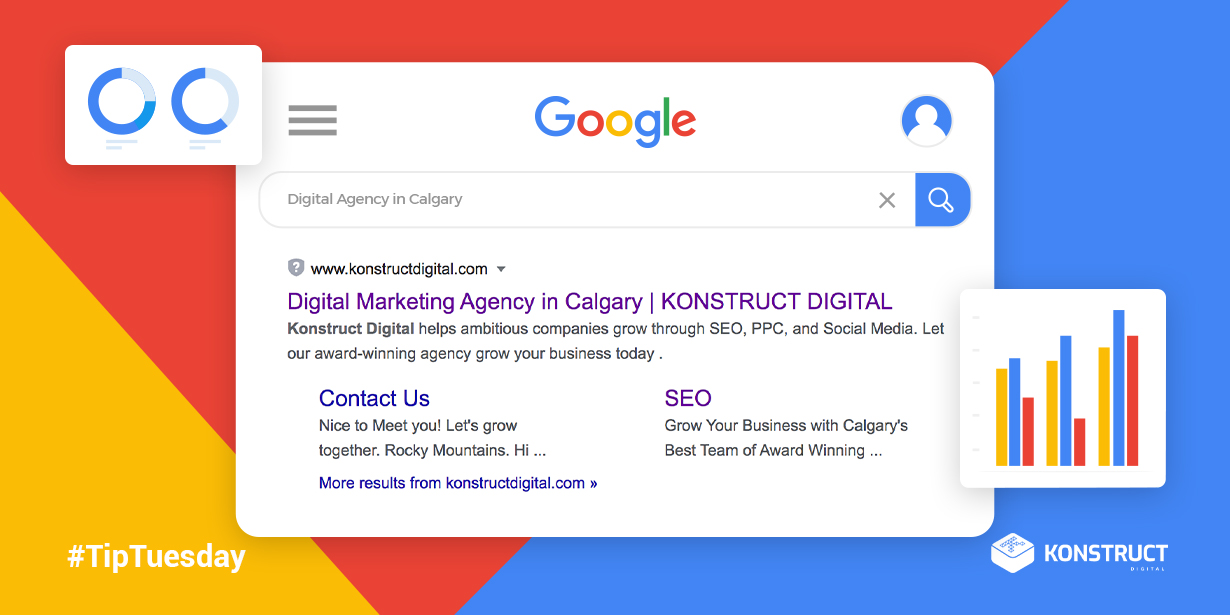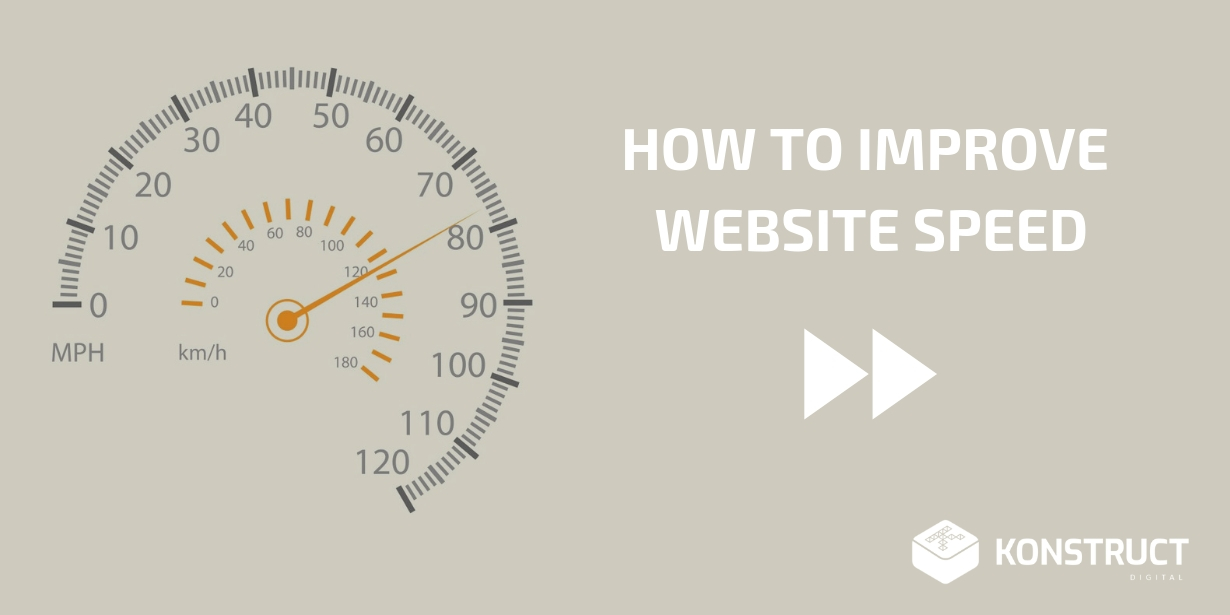When it comes to eCommerce, an SEO blunder can cost you a pretty penny in lost sales!
SEO should be a crucial part of any eCommerce marketing strategy to ensure that your site and products rank in search results. However, some eCommerce businesses find that their site and product pages are still lost and floating around in the Google abyss.
If this you, you’re in luck! For this blog post, we asked 16 digital marketing experts to share the most common (and detrimental) eCommerce search engine optimization mistakes. By the end of this blog post, you’ll know exactly what NOT to do when setting up or optimizing your eCommerce website.
For your reading pleasure, we divided their answers into the following categories:
- Inadequate product descriptions, titles, and images
- Using duplicate content for product descriptions
- Mishandling out of stock pages
- Poor website architecture
- Poor URL structure
- Keyword stuffing product pages
- Not using product schema markup
- Using tabs or accordion content
- Using dynamically generated content
- Focusing only on classical SEO ranking factors
So… how do these mistakes negatively affect your search rankings? And how can you fix them to create a more search-engine-friendly eCommerce site? Let’s dive in and find out what the experts had to say!
Inadequate Product Descriptions, Titles, and Images
Matthew Kay

“I frequently run across ecommerce stores that have nonexistent or inadequate product descriptions and titles. Doing a decent job of titling and describing your products is a great way to make sure that they have the best chance possible to rank for relevant terms.
Oftentimes when looking at the difference between a product page that ranks and one that isn’t even on the map, the big differentiator is frequently whether a relevant description exists. While having good titles and descriptions is great for SEO, it’s also something that can assist conversion and convince store visitors to purchase items.”
Steven Orechow

“Optimize Your Product Pages from the Get-Go!
There are a lot of eCommerce sites that have great looking product pages but aren’t ranking to their full potential. It’s easy to pump out a high volume of products without being mindful of on-page structure, title tags or meta descriptions. However, once you have hundreds of products in your store, going back and fixing them can be quite a headache, especially if you have limited budget/resources.
Here are a few tips that can help you lay the initial groundwork for your eCommerce SEO strategy and maintain it going forward:
Keyword Research: Get your product-specific keywords ready during the planning phase. This way, you can structure your pages around keyword data as you build out your site.
On-Page: Try to include the primary keywords in your title, product description, URL, title tag and meta description. There are plenty of Shopify Apps, Magento Extensions and WordPress plugins out there to help you do this at scale with accuracy and consistency.
Product Images: Making sure you have quality product images is pretty common knowledge, but there are a few things to consider before uploading them to your online store. Properly resizing your images for the web and being mindful of file size will help you keep your site’s page speed in check. You may also want to consider serving them in a progressive format like WebP or AVIF for increased web performance without having to compromise quality. Don’t forget to include your primary keywords in the alt text and file name!”
Krista Lawson, Break the Web

“The biggest SEO mistake we see eCommerce sites making is not optimizing their product pages according to search demand. This is a huge problem because you might be wasting your time promoting your product in a way that no one is using to search for it, and that means it won’t be seen.
For example, optimizing your product page for “12-cup coffee pot” when people are searching for “Cuisinart 12-cup coffee pot” could seriously lower your ranking in SERPs… honestly, you might as well be invisible.
When you’re writing your headlines, title tags, and product descriptions, spend some time researching search demand and the keywords people are using to find your product.”
Using Duplicate Content
James Norquay, Prosperity Media

“One very common eCommerce SEO mistake we see is companies using duplicate content for product descriptions. It is advisable to make unique content where possible for products you want to rank well. It is also important to build out your category level pages with unique content as this will also assist with ranking the category level page.
Another common issue you need to work on is checking your scripts on the website, if you are no longer using a heat mapping tool for example, remember to remove the scripts. These can really slow down the load times for eCommerce sites. You need to be running regular script audits of the website.”
Steven van Vessum, ContentKing

“A customer published tens thousands of duplicate variants, products that were exactly the same as existing products but just had a different color.
As you would expect, Google didn’t index most of these near-duplicates. It just took up precious crawl budget while also diluting the internal flow of link authority (this was shared with the near-duplicates).
We recommended the customer either canonicalize these product variants to the primary product, or that they create unique product descriptions and images for each product variant they wanted to get indexed.
They ended up removing 80% of these product variants, and adding unique content to the remaining 20%.”
Mishandling Out of Stock Pages
Niki Mosier, Two Octobers

“One eCommerce mistake I see often is mishandling of out of stock pages. Just listing an item as out of stock with no further information provides a poor user experience and is a missed opportunity.
If an item is out of stock, a few things should happen on the website:
1. Give an approximate back in stock date if possible.
2. Give users an option to be notified when the product is back in stock.
3. Recommend a similar product to the customer to hopefully still get a sale.
Providing more information for out of stock items can help keep a user on the site and hopefully bring them back to the site when the item is back in stock.”
Zawad Iftikhar, Slyecom

“Not doing a technical audit to clean up the dead and no longer in inventory products periodically is one of the most common e-commerce SEO mistakes I see. eCommerce sites offer all kinds of filters and options on product pages without planning whether it is something that they want to be Indexed in Google. This creates a huge number of dead URLs and index bloat which eventually holds them back in Google search results.”
Poor Website Architecture
Jonathan Gorham, Engine Scout

“One of the biggest SEO mistakes I see on eCommerce sites is poor website architecture. Ecommerce websites by nature have a lot of pages and it’s important you get the structure right from both an SEO and user experience standpoint.
For example, let’s say you sell shoes online, you’d want to first split them into men’s and women’s categories and then further refine these by sub-categories depending on what type of shoes you sell. Helpful sub-categories for shoes could include sneakers, boots, dress shoes, sandals etc. Additionally, adding helpful filters will allow customers to shop by brand, colour, price, etc.. while also helping to increase your store’s organic visibility for long-tail search terms that can drive a lot of sales.
As a general rule of thumb, always select categories based on the best user experience, not on what keywords you think have the highest volume and your store will do well.
If you fail to get your eCommerce store structure right then it’s not only going to negatively impact your SEO, it’s going to confuse customers who will find it difficult to shop for the products they want and your store will miss out on sales.
If you find that your eCommerce structure is confusing and some of the categories don’t make sense or it’s hard to find products. The best thing you can do is simplify your store by reducing the number of category pages on your store and group as many similar themed product pages onto the appropriate category page. If you reduce category pages but still notice it’s difficult to find products easily you can always add sub-category pages or filters if it makes sense from a user perspective.”
Poor URL Structure
Eleanor Reynolds, Contrast

“Most online shops offer filtering options on their category or subcategory pages (filter by brand, size, colour, type, etc.). You can also order products by newest in, price (highest to lowest, lowest to highest, biggest discount etc). Every single one of these options can create a new URL. For example:
www.example.com/shoes
www.example.com/shoes?size=4
www.example.com/shoes?size=4%colour=red
www.example.com/shoes?size=4%colour=red%brand=dune
www.example.com/shoes?size=4%colour=red%brand=dune%price=lowest-to-highest
Depending on the order in which you add the filters, the urls look different. For instance you could have:
www.example.com/shoes?size=4%brand=dune%colour=red
or
www.example.com/shoes?size=4%colour=red%brand=dune
or
www.example.com/shoes?colour=red%size=4%brand=dune
You get the picture – this one URL could have 9 different variables – add that across every single type of filter and every single way you could organise those pages: you suddenly have yourself thousands of pages with the same content on them. This is absolutely catastrophic for SEO, unless you have what is known as a canonical tag.
The canonical tag is placed on all of these possible urls, and basically says, this is the main page, crawl and rank this one, ignore me:
www.example.com/shoes
It’s incredibly simple to implement on the majority of content management systems out there, (some maybe more difficult, but with a good developer you should be able to find a way around it), and it really does save the day in terms of SEO sometimes. And yet, tons of eCommerce stores don’t do it!
And, be sure to include brand names and model numbers in your H1 headings and title tags. Don’t forget to include keywords in your image alt tag info, but remember not to overstuff the page with the same keyword and phrases over and over again.
Remember, Google prioritizes relevancy, so you always need to be thinking about ways to make it easier for the searcher to find exactly what they’re looking for. Be specific!”
Nick LeRoy, Nick LeRoy Consulting LLC

“The biggest ecommerce issue I see is not controlling how search engines crawl and index the website. Ecommerce websites are known to have faceted navigation that can cause an extreme amount of pages. Think about it. If a user can choose both colors and sizes the permutations can be extensive. Now imagine if you add 5, 10, 15+ facets that you can mix and match.
It’s also important that faceted navigation not simply be ‘solved’ with the use of the canonical tag. While it may solve for true duplicate content issues (from the permutations) you are still relying on Google to crawl all of these page variations to properly attribute the canonical value. This will very likely make it difficult for Google to allocate resources to crawling/indexing content you actually want included in the search results.
The proper solution is use a combination of meta robots, no index, and robots.txt directives to prevent both the crawling and indexing of faceted pages that do not provide significant search value.”
Dave Nilsson, The Converted Click

“Mostly three things: Duplicate content, bad url structures and poor internal linking/architecture.
With many e-commerce platforms, replicated pages can cause duplicate content or descriptions without anyone knowing about it.
A common example of this is when someone uploads products in bulk without checking everything extensively. Very often a default description item is in place as it is easier, yet it’s a poor reflection.
In turn, url strings become long and complicated.
The last point I’d like to highlight would be a lack of information architecture which follows a solid internal linking structure.
It makes sense that related sections of products or information should be nested closely and easily accessible for crawlers and humans. At times, a user would greatly benefit from being able to easily click on a product category which is the perfect addition to the initial product they are viewing.
Example: we often see cases where there are links and headings saying ‘commonly purchased together’ etc. This could be an opportunity for internal linking to the next relevant product which will be a good addition for the customer and also more sales and revenue.
I feel information architecture in any situation needs to be extensively researched, planned and mapped into relevant sections. In the e-commerce space it is even more essential.”
Keyword Stuffing Product Pages
Ben Walker, Transcription Outsourcing, LLC

“One of the most common eCommerce SEO mistakes I’ve seen is to spam your own site’s pages. What I mean by this is when sites keyword stuff, and go so overboard that the page, or pages, are unreadable. Sites will use their chosen keyword phrase so often in everything including the URL, Alt tags, meta tags, and throughout the content it sends a signal to both the visitors and Google that you are trying way too hard to force this page to rank for whatever term that it backfires on them. It makes the page very difficult to read and comprehend which will cause people to bounce from your page, and that will also hurt your SEO. When visitors bounce from your page, Google will detect it and penalize your page in the search engine results. A high bounce rate will also hurt your site because Google is being told that your page is not what the searcher was looking for.”
Not Using A Product Schema Markup
Hakon Agustsson, MyTweetAlerts

“Not using product schema markup and not optimizing images for SEO. If you use product schema markup, Google and other tools and websites can pick up all the details about your products and display them correctly. You are making it easier for your products to be seen outside of your website.
Many images on Ecommerce websites are not found in Google Image Search at all. If you make sure that the image filename and alt tag are relevant and descriptive then it is easier for Google to know what images and products you are selling. Most people don’t pay attention to the image filename but preview123.jpg is not as good as black-jacket.jpg.
Why make it so hard for Google to know what images you have on your websites? As people don’t pay attention to those things you can sometimes easily rank in Google Image Search when it is really hard to rank in Google Search for the same terms and keywords.”
Using Tabs or Accordion Content
Geoff Kenyon, Pomar Digital

“One common SEO problem on ecommerce sites is product detail pages often have content in collapsed or accordion containers, or hidden in divs. This is most often product descriptions, specifications, and reviews. Collapsing this content is much cleaner for UX and is often a point of contention between design and SEO teams.
While Google historically said that content which isn’t viewable on page load (ex. tabbed or collapsed content) maybe be discounted, more recently in 2016 Google said not to worry about this; that they fully count this content.
Despite Google saying not to worry about this content, I have found this often to not be the case. When I have worked with clients to change the tabs or collapsed content to be entirely visible on page load, I have typically seen clients improve organic traffic to product detail pages by 5% to 10%.
While some tabbed and collapsed content implementations may not actually deliver the hidden content in the initial page load, my clients had typically served this content to Google, it just wasn’t visible – inherently, these gains were not from now delivering the content to Google, but actually displaying the content to Google.
While you can just show all the content to Google on page load, clients who want to create a tabbed content feel have another option: sites like Home Depot and Motoroso create the feel of tabbed content but have a hovering menu that persists through the product, description, specifications, and reviews section of the page with jump links that help a user navigate through these sections. This enables a site to create more structure and navigation and the product detail page subsections while still exposing the content fully for Google and getting full SEO value from this content.
Using Dynamically Generated Content
James Macnamara, Blink SEO

“Setting up a site to use dynamically generated content to display new product categories / sub-categories.
If you don’t have a static page for that content you can’t appear in organic search, so you’re missing out on the cumulative traffic you can generate to your site just by having as many unique pages as possible. You also miss out on having a cohesive site structure organised semantically around topics—if your product subcategory isn’t linked to its parent category and is instead dynamically generated, then the parent category isn’t supported by a subtopic. This means it’s not as powerful (in the eyes of a search engine).
Reservations around this are justified—not having many products on subcategory pages, user experience, resources for creating new content—but it’s much easier to have the static pages, or at least the ability to create them, in place as early as possible, preferably from the initial build. Think about growing into them rather than worrying about having too many.
Migrations to new URL structures are always a pain, but if you have an eCommerce store with nicely layered product categories and subcategories, migrating to a static structure will be of long-term benefit. And if you’re undergoing a rebuild/changing platforms, don’t start generating content dynamically! This would be potentially disastrous.”
Focusing Only on Classical SEO Ranking Factors
Serbay Arda Ayzit, Contentus

“Focusing only on classical SEO ranking factors 🙂 What i want to say is that most eCommerce companies only try to write more content on category pages, h1s, titles, query rankings, etc. In this part, they are making mistakes by finding low rankings reasons with these factors. But in the e-commerce game, you need to look beyond that and understand why users choose other sites. Most of the time, the main reasons are your range of products and pricing.
Instead of classic factors, try to crawl competition and understand your product range vs. theirs, your average pricing vs. theirs. We all know one of our main goals in SEO is to keep users on the page. If you do this, you will succeed.
Also, the listing is another crucial step because when users enter your page/category, they have some popular products in their minds, which you can also find via keyword research tools. If you don’t put those kinds of products prominent, then the user may bounce back. In the end, popular products, your avg. price, and product range are crucial metrics you need to look at.”
Time To Fix Those eCommerce SEO Mistakes!
Whew! These expert responses were jam-packed with insights on what NOT to do when optimizing or developing your eCommerce website. Now it’s time to get to work!
Here is a summary of some of the best eCommerce search engine optimization tips covered in this article to help you out:
- Ensure that all of your pages, product descriptions, and product titles are keyword optimized and include unique content that hasn’t been duplicated. At the same time, avoid keyword stuffing that could turn potential customers away.
- Provide more information for out of stock items to keep users on your site, such as approximate back-in-stock date or similar products.
- Select product categories based on the best user experience, not on what keywords you think have the highest search volume.
- Use canonical tags and control how search engines crawl and index your website to prevent both the crawling and indexing of faceted pages that do not provide significant search value.
- Use product markup schema so Google and other tools and websites can pick up all the details about your products and display them correctly.
- Create the feel of tabbed content without losing out on organic traffic by implementing a hovering menu that persists through the product, description, specifications, and reviews sections of the page with jump links that help a user navigate through these sections.
- Create static pages for dynamically generated content so your content can appear in organic search results.
- Don’t forget the importance of having a good product range and competitive pricing!
If you’re still stuck on how to improve organic search traffic for your eCommerce website, the Konstruct Digital SEO specialists are here to help! Contact us today to find out how we can add SEO best practices to your eCommerce marketing strategy to help you improve your organic search rankings and eCommerce sales.








